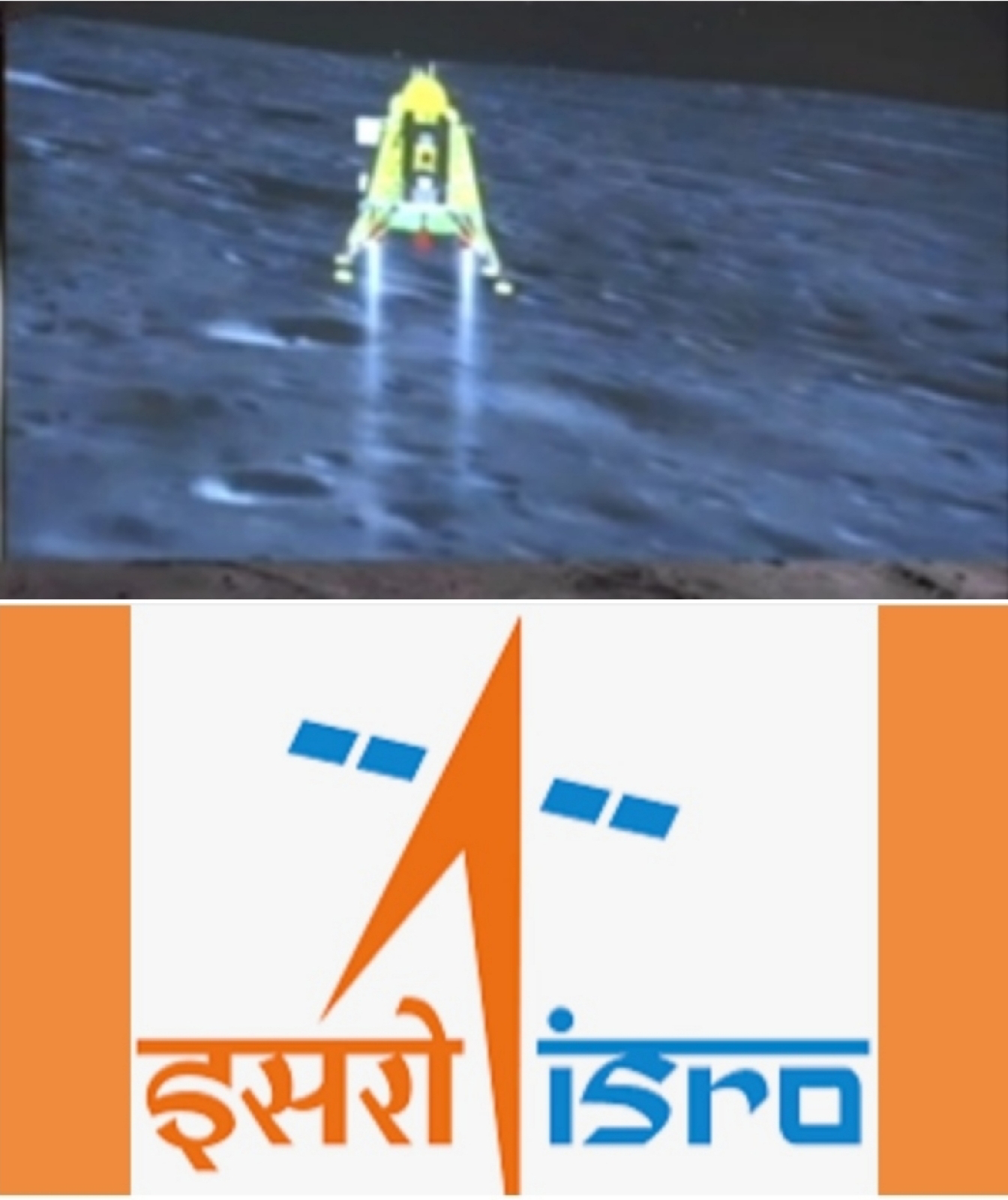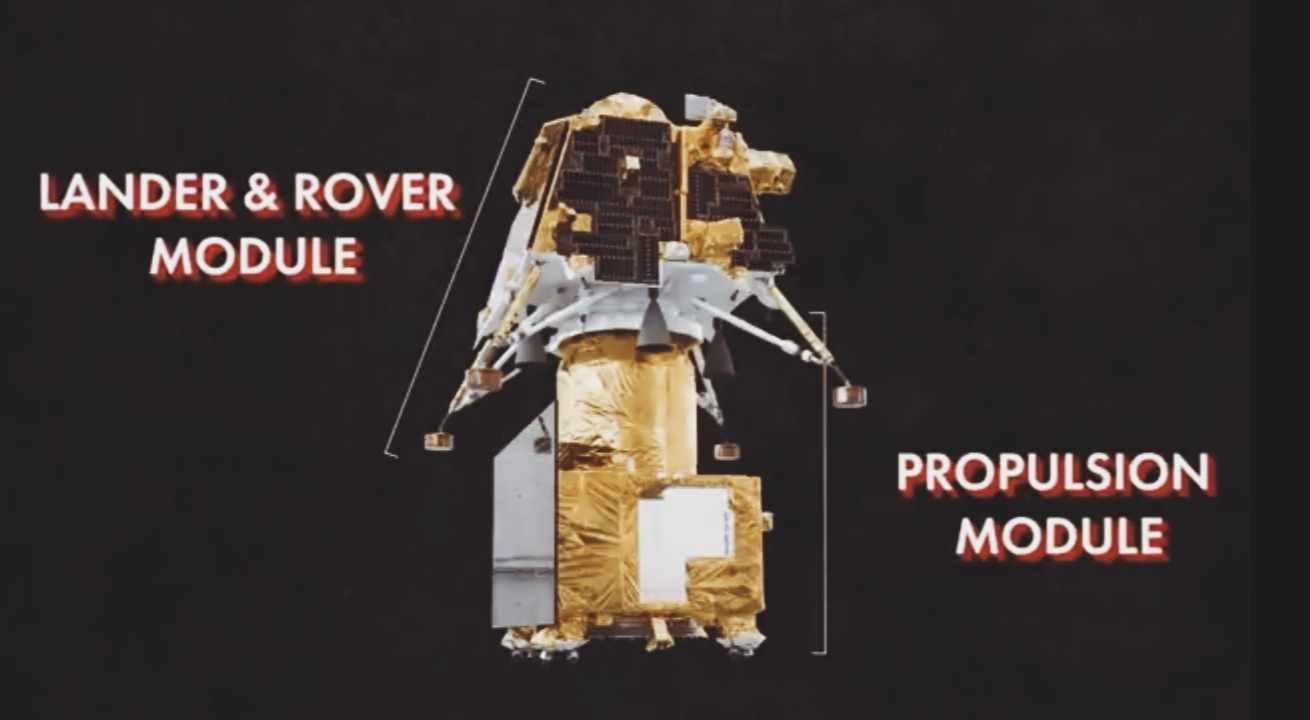Chandrayaan-3 : India on the moon .
India's Chandrayaan-3 mission is a noteworthy accomplishment in the history of lunar exploration. It is the third lunar mission undertaken by India as part of the Chandrayaan program, which is Sanskrit for "mooncraft". The mission consists of a lander named Vikram and a rover named Pragyan, similar to those of the Chandrayaan-2 mission, which failed to land on the moon in 2019.
Chandrayaan-3 successfully landed near the south pole of the moon on August 23, 2023, at 6:04 p.m. IST,
India became the first nation to do so.
Due to the presence of continuously shadowed craters that may contain water ice and other volatiles, the south pole of the moon is an area of significant interest. Future manned lunar exploration and colonization may benefit from these resources. A special vantage point for seeing the solar system and the Earth is available from the South Pole.
Chandrayaan-3's primary goals are to demonstrate a safe and soft lunar surface landing, run a rover for in-situ scientific investigations, and gather information on the lunar topography, mineralogy, elemental abundance, lunar exosphere, and indications of hydroxyl and water ice. Additionally, the project intends to advance India's technological prowess and demonstrate its dominance in space exploration.
The mission was launched on July 14, 2023, by a Geosynchronous Satellite Launch Vehicle Mark III (GSLV Mk III) rocket from the Satish Dhawan Space Centre in Sriharikota. A very elliptical earth orbit was reached by the rocket that launched an orbiter, a lander, and a rover. On July 28, 2023, the orbiter inserted the lander-rover module into a lunar transfer trajectory following a series of orbit-raising manoeuvres. On August 5, 2023, the module arrived close to the moon and began a polar orbit around it. On August 20, 2023, the orbiter broke apart from the module and continued to orbit the moon at a height of around 100 kilometres.
A sequence of orbit-lowering manoeuvres was carried out by the lander-rover module to get it to a height of around 30 kilometres above the lunar surface. It began a powered fall phase on August 23, 2023, which lasted for roughly 15 minutes. The module utilized its thrusters to lower its speed and altitude during this phase while avoiding obstructions and looking for a suitable landing spot. The Simpelius N crater, located at a latitude of 70 degrees south and a longitude of 23 degrees east, is close to the south pole of the moon and is where the module successfully touched down.
The lander established communication with the Indian Deep Space Network (IDSN) at Byalalu near Bangalore and deployed two solar panels to generate power. For the rover to exit, a ramp was also deployed. At 6:39 p.m. IST, the six-wheeled, 27-kilogram rover rolled down the ramp and made contact with the lunar surface. Additionally, it started talking to the lander and IDSN. The rover will move around the landing site and carry out numerous tests using its instruments during its 14-day existence on Earth.
Two cameras, an alpha particle X-ray spectrometer, a laser-induced breakdown spectroscope, and a passive temperature probe are all equipped with the rover. The cameras record and transmit pictures and videos of the lunar surface to the lander and IDSN. Rock and soil sample chemical compositions are examined using the APXS and LIBS. The PTP is used to gauge the lunar regolith's thermal conductivity and temperature gradient.
Four cameras, a seismometer, a Langmuir probe, a thermal probe, and a retroreflector are also included on the lander. The cameras are employed to record the operations of the rover and capture pictures of the surrounding area. The seismometer is employed to find moonquakes and investigate the lunar interior. The plasma environment close to the lunar surface is measured using the Langmuir probe. The thermal probe is used to gauge the lunar soil's temperature variation. The retroreflector is used to reflect laser beams from observatories on Earth or from orbiting satellites.
At a height of roughly 100 km, the orbiter is still revolving around the moon. Eight scientific instruments are carried by spacecraft: the terrain mapping camera (TMC-2), the Chandrayaan-2 atmospheric compositional explorer (CHACE-2), the dual frequency synthetic aperture radar (DFSAR), the imaging infrared spectrometer (IIRS), the orbiter high-resolution camera (OHRC), the solar X-ray monitor (XSM), the dual-frequency radio science experiment (DFRS), and the orbiter laser altimeter (OLA). These devices are employed to map the lunar surface, investigate the lunar exosphere, look for water ice and minerals, keep track of solar activity, analyze the lunar gravity field, and establish the topography of the moon.
Throughout its career, which is more than a year, the orbiter will transmit to IDSN the information gathered by the lander and rover. Additionally, it will carry out independent research projects and experiments. Future Indian lunar missions will use the orbiter as a communication link as well.
The Chandrayaan-3 mission provides evidence of India's ambition and scientific prowess. It has created fresh opportunities for lunar exploration and research. Millions of Indians and people all over the world have also been motivated to aim high by it.








Comments
Post a Comment